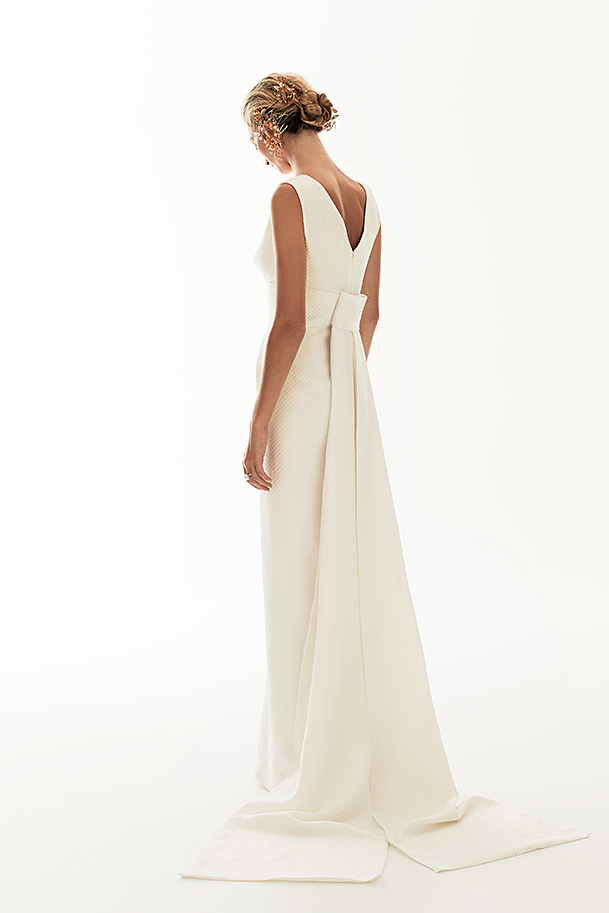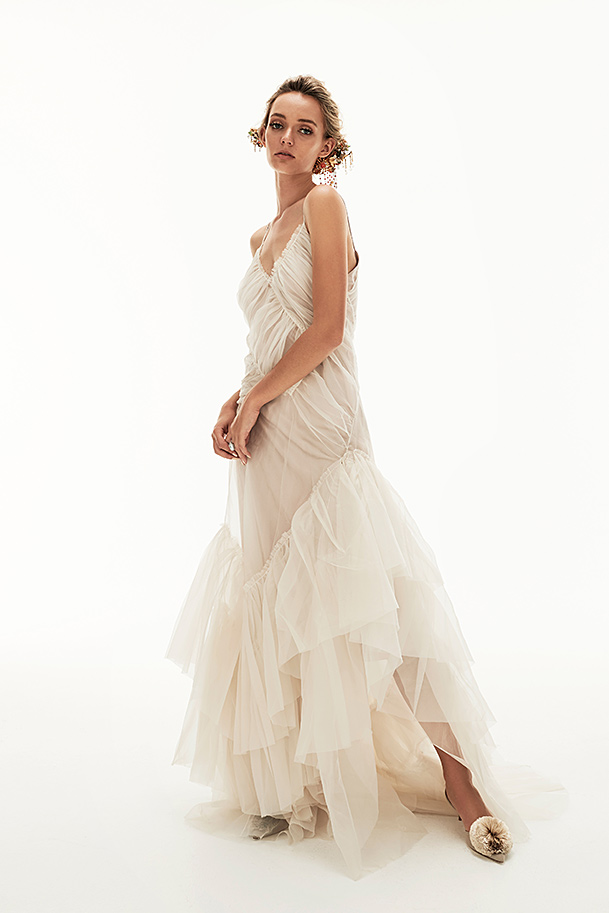How to work with your bridal gown designer for the perfect dress
A custom made wedding dress is one of the most treasured dresses you will ever wear to celebrate the happiest day of your life. But, for some brides-to-be, the journey to creating their dream wedding dress can be a stressful one. Poor communication with the designer and unrealistic expectations could turn the whole experience into a nightmare of teary fittings and unforeseen cost.
If you’re not choosing from your designer’s existing range of samples and designs, it can be hard to know, let alone describe, what you are looking for in a gown, but you can follow my checklist to make sure you’re on the same page with your designer.
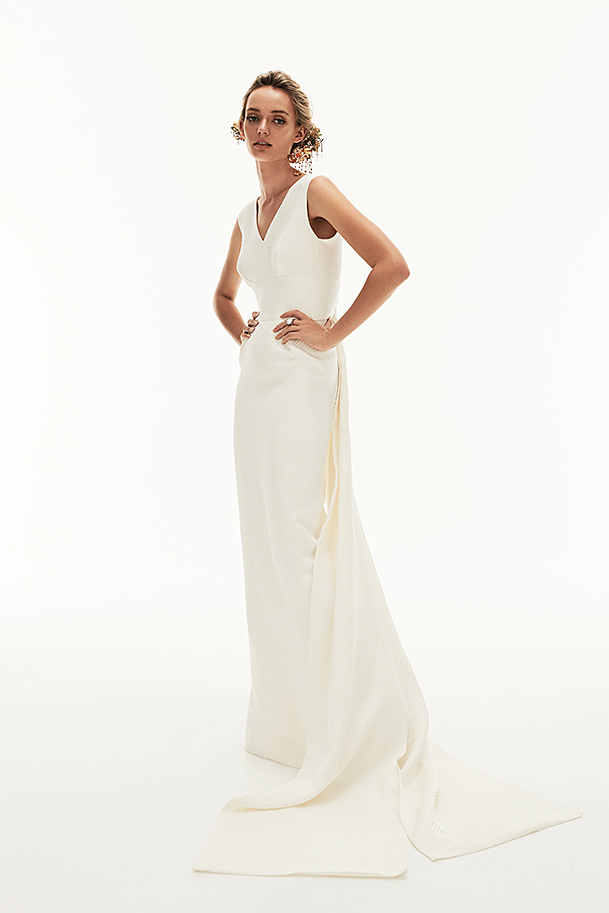
1. KNOW WHAT YOU WANT AND BE CLEAR ABOUT IT
Start a research file and gather pictures, fabrics, shapes and colours so you have an idea of what appeals to you in a gown. Use Pinterest, a photo album or good old fashioned manila folder to keep notes and samples on everything that catches your eye. When you have clear visuals, you’ll be able to show your designer the direction you’re going in.
It’s also important to be yourself. You will be the recipient of advice from well-meaning friends, relatives, and sales assistants, but it’s very hard for anyone to advise you without imposing some reflection of their own taste. By all means get advice but take some breathing space to try and filter what you truly feel your dress needs to be.
2. CLEARLY BRIEF YOUR DESIGNER
Knowing the correct fashion vocabulary will mean clear communication. Before speaking with your designer, make sure you have your own mind made up and know your design details so you can describe what you’re dreaming of.
Do you want a strapless fit, a sweetheart cut, a boat neckline, off-the-shoulder, square or scoop neckline? Do you prefer a straight silhouette, a fish-tail, A-line cut, pencil fit or empire line silhouette with a tulip, full, gathered, box pleat, or bias cut skirt? What about a peplum?
And sleeves; do you want cap, elbow length, long, puff, sheer, fitted, flared, bell or split front? Will your gown be floor, ankle, ballerina, knee-length, mini or hi-low? Do you want a train? Knowing your terminology will mean clear communication with your designer, and less room for mistakes.
Download my Wedding Dress Style Glossary to see images of the fashion terms listed.
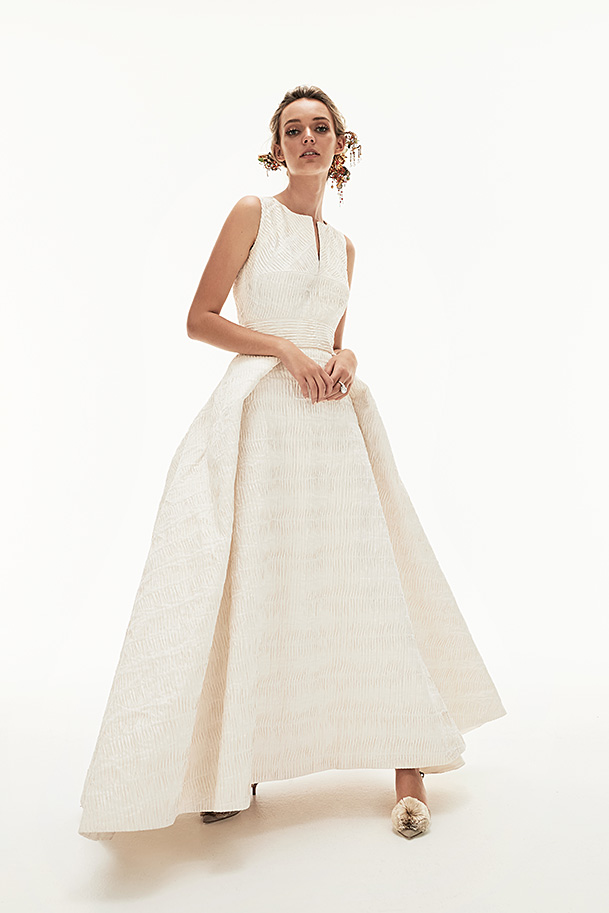
3. BE CLEAR ABOUT YOUR BUDGET
From the very beginning, you should have a budget in mind, and it’s important to communicate this to your designer so they are aware of what they have to work with. If your design is proving more expensive than your initial budget, find out why. Is it the fabric, trim or labour? Ask your designer to help you work out a compromise.
Often this is the first and only time you will have a gown this complex made for you, so remember there’s a lot more to it than you might imagine. Most designers love to explain what goes into the making of a gown and if they don’t, this should sound alarm bells!
4. DISCLOSE YOUR DIET PLANS
I have yet to meet any bride-to-be who doesn’t want to shed a few kilos before the big day, so if you’re planning on seriously altering your shape let your designer know. This allows them to time fittings around a weight loss program to ensure you’re showing off your best body by the time the dress is finished.
Turning up to your final fitting 10 kilos lighter than when you last tried on your gown is a recipe for disaster and an added expense, and there may not be time for alterations.
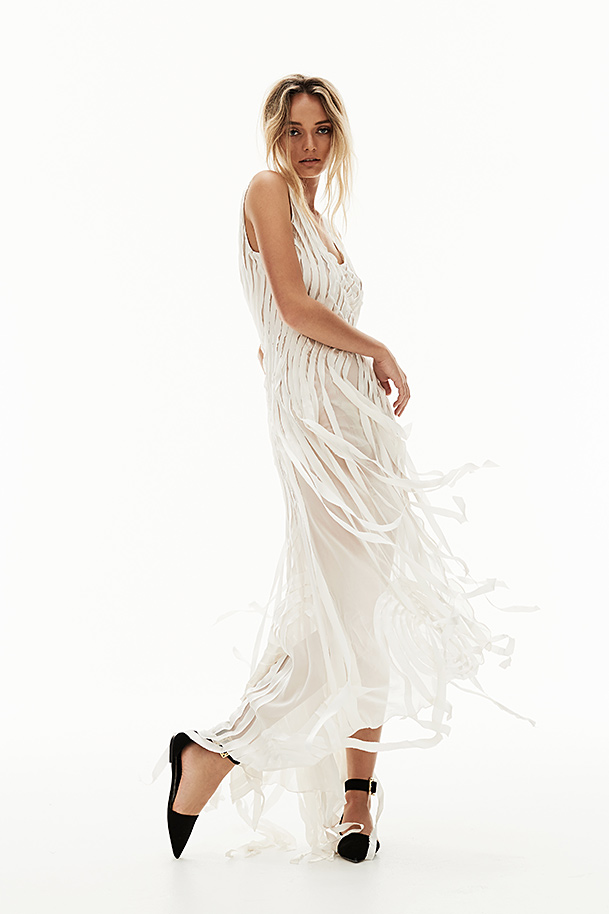
5. ASK IMPORTANT QUESTIONS
What does the price include? There are many horror stories of brides who arrive to pick up their gown and find they owe hundreds of dollars in ‘extras’. Get a quote (with GST) in writing and a receipt for any payments you make along the way. Find out what the deposit is and what the payment terms are.
Will there be a toile? Most designers will create a mock-up of your dress (either the bodice or full gown) using toile, (pronounced ‘twarl’) a fabric made of calico or cotton which allows your designer to make adjustments to fit and style before the gown is cut from your precious fabric.
How many fittings will there be and when are they scheduled? This is especially relevant for brides planning to lose weight. You should have an idea of how often you need to meet with your designer and this can be anything from two to four fittings, but it will depend on the design of your gown.
When do I need shoes and underwear? At some point you will need to be fitted wearing your chosen bra (if you’re wearing one) which is usually done quite early on, and shoes (for hem length) which are normally worn towards the end of the dressmaking process.
What is the fibre content of the fabric? Most wedding dress fabrics are not cheap so make sure you get what you’re paying for. Ask where the fabric comes from, what the fibre content is, and how to care for it.
How will I clean my dress? I have a dry cleaner that I use and recommend to look after my bridal clients, but some gowns can actually be washed.
Any other questions?
If you’ve got any questions that I haven’t covered here or want to chat wedding dresses in general, send me an email [email protected] or pop into my Albert Park studio for a fitting.

